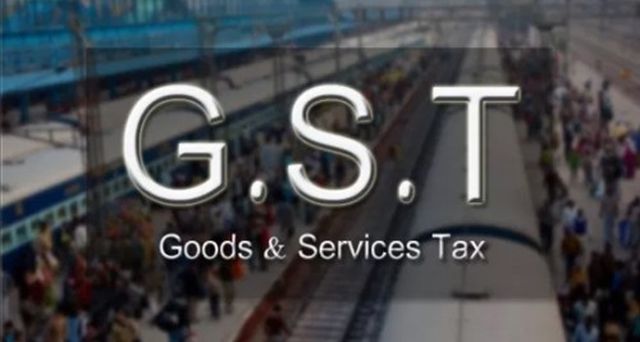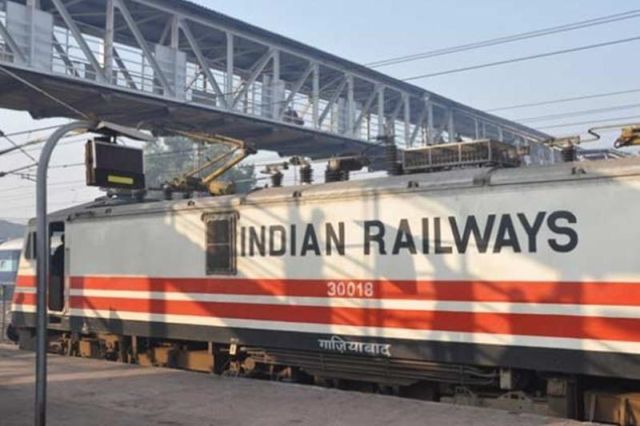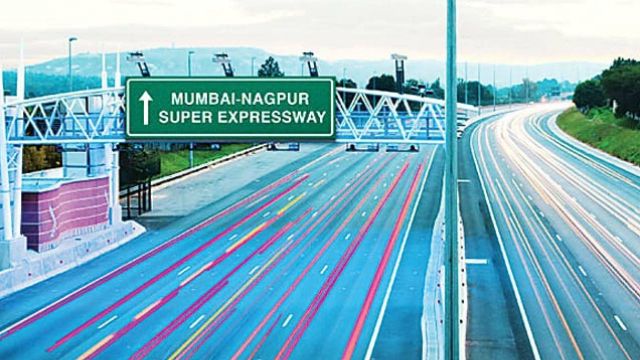
by admin | May 25, 2021 | Corporate, Corporate Governance
 By Arun Kumar Das,
By Arun Kumar Das,
New Delhi : Indian Railways’ long-awaited and ambitious project to set up a waste-to-energy plant at Jaipur railway station has run into Goods and Services Tax (GST) hurdles, causing a delay in the commissioning of the first such municipal solid waste management centre on the rail network.
Though the process of setting up the plant in Jaipur and then at the New Delhi station began two years back and the successful bidder has brought in the required machinery and technology, the procurement process is yet to be GST-compliant, causing the delay.
While the Jaipur plant would manage five tonnes of solid waste per day, the New Delhi plant would have a capacity of 10 tonnes per day. The process involves segregation, recycling and conversion of waste to energy.
The Railways has provided the land to set up the plants and the project is being executed by the RITES, a public sector unit under the Railways, through its corporate social responsibility (CSR) fund.
Admitting to the delay in commissioning the project, a senior Railway official told IANS: “Since this is the first such project being executed by Railways; there are several issues to be sorted out as a learning experience. Unless procurement is fully GST-compliant, Railways cannot make payment.
“Besides, there was also a delay on the part of the successful bidder in arranging a bank guarantee as the recent banking scam has made the process tougher.”
The project involves segregation of bio-degradable and non-degradable waste. According to an estimate, one tonne of bio-degradable waste produces 100 units of electricity. Energy generated from these plants would be utilized for suitable services at/near railway stations.
However, the official hoped that the GST issue would be sorted out and the first plant is expected to be operational in Japiur shortly and next plant at New Delhi station would closely follow.
Railways have given instructions to all zones and production units to set up solid waste management facilities, including segregation and waste-processing methods such as composting, vermi-composting, bio-methanation, for bio-degradable waste and recycling of recyclable waste.
Besides Jaipur and New Delhi, Railways will be setting up such plants for disposal of municipal solid waste generated at railway stations at four more stations — Patna, Secunderbad, Chennai and Varanasi — in an environment friendly manner, including conversion of waste to energy.
(Arun Kumar Das can be contacted at akdas2005@gmail.com)
—IANS

by admin | May 25, 2021 | Corporate, Corporate Governance, News
 By Arun Kumar Das,
By Arun Kumar Das,
New Delhi : Howrah Division in Bengal is the worst performer as far as trains running on time is concerned, with a punctuality performance of only 34 per cent for the week ended June 3. It is closely followed by Lucknow Division with 39 per cent.
Curiously, an above 80 per cent punctuality rate is considered “reasonable” for Indian Railways, one of the largest railway systems in the world. Currently, Indian Railways’ overall punctuality rate is about 65 per cent — not an ideal situation for authorities or passengers.
Railway Board Chairman Ashwani Lohani has said: “At the moment, punctuality rate is 65 per cent and I am not satisfied.”
Zonewise, South East Central’s punctuality performance has remained at the bottom at 44 per cent followed by North Central’s 47.5 per cent, according to Railways data.
However, Bhavnagar has fared extremely well with 99.27 per cent while Sealdah Division has clocked 98.19 per cent in the week from May 28 to June 3 this year.
Delhi Division’s performance is below the 65 per cent mark at 64.64 per cent, while Mumbai Division is even worse at 55.5 per cent for the same period.
Though Railways has made an all-out effort to prevent delays by improving the punctuality rate, Mail/Express trains are sometimes running more than five to 10 hours behind the schedule, causing much inconvenience to passengers.
Even premium trains like Rajdhani, Shatabdi and Duronto are running late in some sectors due to various reasons, including ongoing track renewal and maintenance, bridge repair and speed restrictions.
“In order to ensure safety, Railways has undertaken a massive track renewal job, replacing old and aged lines in a concerted manner,” a senior official involved with safety operations told IANS. He added that track renewal is under way in almost every section.
Since track renewal is a priority now, lines are blocked for the work, which causes the trains to run slow.
The tracks fit for 110 km to 130 km per hour speed are also witnessing the slowdown effect, with even the Rajdhani service being hit.
Besides Lucknow, other divisions of the Northern Zone are also performing badly on the punctuality front with Moradabad’s being a low 40.14 per cent.
In the Southern Zone, Thiruvananthapuram has touched 45.68 per cent while Chennai and Palakkad are at 66.4 per cent and 69.08 per cent, respectively.
While East Central’s Sonepur has clocked 44.19 per cent, Danapur Division recorded 67.6 per cent punctuality rate last week.
Mughalsarai, the busiest section of the rail network, has not been able to touch even the 55 per cent mark as it registered 54.72 per cent punctuality rate.
(Arun Kumar Das is a senior Delhi-based freelance journalist. He can be contacted at akdas2005@gmail.com)
—IANS

by admin | May 25, 2021 | Corporate, Corporate Governance
 By Arun Kumar Das,
By Arun Kumar Das,
New Delhi : Indian Railways has joined hands with the Ministry of Road Transport and Highways to twin a rail line along the proposed expressway between Mumbai and Nagpur — a first such coordinated move to execute a transportation project.
Both arms of the government will work together to put the project on the fast track with the aim of drastically cutting travel time on the busy route.
“Spanish consultant Ineco has conducted a feasibility study on constructing a high-speed rail line along the proposed Mumbai-Nagpur Expressway and the reports are positive,” a senior Railway Ministry official told IANS.
Ministry of Road Transport and Highways, which is already acquiring land for the proposed expressway, will keep the rail project in mind, he added.
The elevated rail line could be built in the middle or along the proposed 800 km expressway depending on the ground situation, according to a feasibility report.
The official said that twin tunnels and bridges can also be constructed to cross rivers and negotiate hilly areas in a coordinated way for road and rail traffic.
While the feasibility report is being examined by the Railways officials concerned, the Spanish team is set to make a detailed presentation, including on the financial aspect, to the public transporter shortly to take the ambitious project further.
According to the study, travel time will be drastically reduced for both road and train travellers as the expressway will be fully access-controlled while the elevated rail track will ensure an uninterrupted high-speed train journey.
Land acquisition is a serious problem and many rail projects, including the ambitious Dedicated Freight Corridor, have been delayed due to land-related issues. The Mumbai-Ahmedabad high-speed rail corridor is also facing the same problem.
Incidentally, the improved road network in the country has taken a toll on the Railways’ business on shorter routes and the national transporter is making a concerted effort to wean away goods and passenger traffic from roads and increase its share.
“It’s a new way of executing the project faster, as the combined efforts to acquire land will ease a major burden for both ministries and pave the way for speedy execution,” the oficial said.
The Mumbai-Nagpur section is part of the proposed high speed rail corridor between Howrah and Mumbai, the diamond quadrilateral rail project.
(Arun Kumar Das is a senior Delhi-based freelance journalist, He can be contacted at akdas2005@gmail.com)
—IANS

by admin | May 25, 2021 | Corporate, Corporate finance, Corporate Governance
 By Arun Kumar Das,
By Arun Kumar Das,
New Delhi : Despite the Finance Ministry’s objections, Indian Railways is pushing ahead with a proposal to involve the private sector in redeveloping 600 stations on an extended 99-year lease – as opposed to the 45-year lease proposed earlier for 400 stations.
The Railways will seek Cabinet approval for its amended proposal at a time key initiatives of the national transporter, such as 100 per cent electrification, installation of European train control systems and free Wi-Fi at all stations, among others, have not found favour with the Prime Minister’s Office.
The initial proposal for redevelopment of 400 stations on a 45-year lease was made when Suresh Prabhu was Railway Minister. However, the proposal did not receive a good response in terms of bidders.
After Prabhu relinquished charge to Piyush Goyal last year, the Railways, this January, circulated a draft cabinet note to various ministries seeking comments on making significant changes – such as extending the lease period from 45 years to 99 years – in the station redevelopment project that now involves an expenditure of over Rs 1 lakh crore.
While the comments from the Niti Aayog and the Urban Development and Law Ministries were in favour of the Railways proposal, Finance Ministry objected to the 99-year lease period and observed that the “lease period should be limited to 60 years”.
“We have suitably explained to justify the 99-year lease period and are hopeful that the proposal will get approval from the Cabinet next month,” said a senior Railway Ministry official.
Responding to the Finance Ministry’s observation, the Railways has explained in a note that the changes it sought were “essential to attract the major real estate players into such transit-oriented development (TOD) programmes in the urban sector”.
TOD is a type of urban development programme which maximises the amount of residential, business and leisure space within walking distance of public transport. The Railways’ note has details about the TOD which aims to increase public transport ridership, reduce automobile travel, and promote sustainable urban growth.
The basic purpose is to leverage the commercial potential of railway land while at the same time upgrading basic amenities at stations, the official, said adding: “The government aims to use the redeveloped stations as catalysts of economic activity in the surrounding areas.”
The redevelopment of 600 stations envisages opening of shopping plazas, office complexes, hotels, multiplexes and parking lots, among other commercial activities, on rail land, and making provisions for improved passenger amenities at stations.
While the Railways aims to earn about Rs 50,000 crore over the next 10 years from commercialisation of rail land near stations, the ambitious project is expected to involve expenditure of over Rs 1 lakh crore — Rs 80,000 crore in commercial exploitation and Rs 35,000 crore in station redevelopment.
The Cabinet had, in 2015, approved the proposal to redevelop 400 railway stations using a contract method called the “Swiss Challenge” – with a 45-year lease period. However, the proposal did not get a good response, prompting the currently proposed changes.
Besides, earlier only General Managers (GM) of zonal railways were authorised to undertake the exercise. Now it has sought the involvement of states, the public sector, public-private partnership (PPP), and the engineering, procurement, construction (EPC) models as well.
Besides, the India Railway Stations Development corporation Ltd (IRSDC) and NBCC have been roped in to carry out the station redevelopment exercise.
(Arun Kumar Das is a senior Delhi-based freelance journalist. He can be contacted at akdas2005@gmail.com)
—IANS

by admin | May 25, 2021 | Corporate, Corporate Governance, Employment, Government Jobs, Markets, News, Politics, Technology
 By Arun Kumar Das,
By Arun Kumar Das,
New Delhi : That some 2.37 crore people have applied as the Indian Railways kicked off the process of filling up over 88,000 posts is clearly indicative of the “jobless growth” the country is experiencing.
But the exercise has a positive side – by taking the recruitment process online, the Railways is estimated to have saved 7.5 crore paper sheets, or the equivalent of “10 lakh trees”, according to a senior Railway Ministry official.
The state-run transporter has replaced bulky, multi-lingual question booklets with online tests for its recruitment process for various positions — ranging from assistant loco pilot to technician, trackman, gateman and pointsman.
“There are 62,000 posts involving track inspection crews and others related to improving safety, while more than 26,000 posts relate to engine drivers and technicians; for these, more than two crore people have applied,” said the senior official, who is involved with the recruitment process.
The examination will be conducted online at about 300 centres and the Railways is currently working out details.
“One applicant generally requires three-four paper sheets of A4 size to write the examination. So with the whole exercise going online, the Railways has saved a significant quantity of paper sheets,” the official said.
Describing the exercise as a “largest online recruitment drive in the world”, the official said “it is not only providing thousands of jobs, the whole process has also resulted in saving about 7.5 lakh paper sheets and 10 lakh trees approximately”.
The fee has been kept at Rs 500 and Rs 250 to keep out non-serious applicants who apply but fail to appear for the test. For general candidates, the examination fee is Rs 500, of which Rs 400 will be returned to the candidate after he or she appears in the examination.
The fee is Rs 250 for SC/ST, women, those who are physically challenged, applicants from economically weaker sections, ex-servicemen — and the full amount will be returned to the candidates after appearing in the examination.
“We are expecting maximum number of applicants to appear and only about 5-10 per cent absent at various centres this time,” the official said.
Railway, which currently employs 1.3 million people, has made special arrangements to ensure that the website does not crash during the examination. The site was earlier able to handle the traffic of the online application process.
Earlier, recruitment examinations used to be conducted manually, but the Railways had to abandon the system and opt for online mode after a few alleged incidents of question paper leaks.
The online test has resulted in substantial saving of time and resources while at the same time bringing transparency in the recruitment process, the official said.
(Arun Kumar Das is a senior Delhi-based freelance journalist. He can be contacted at akdas2005@gmail.com)
—IANS




